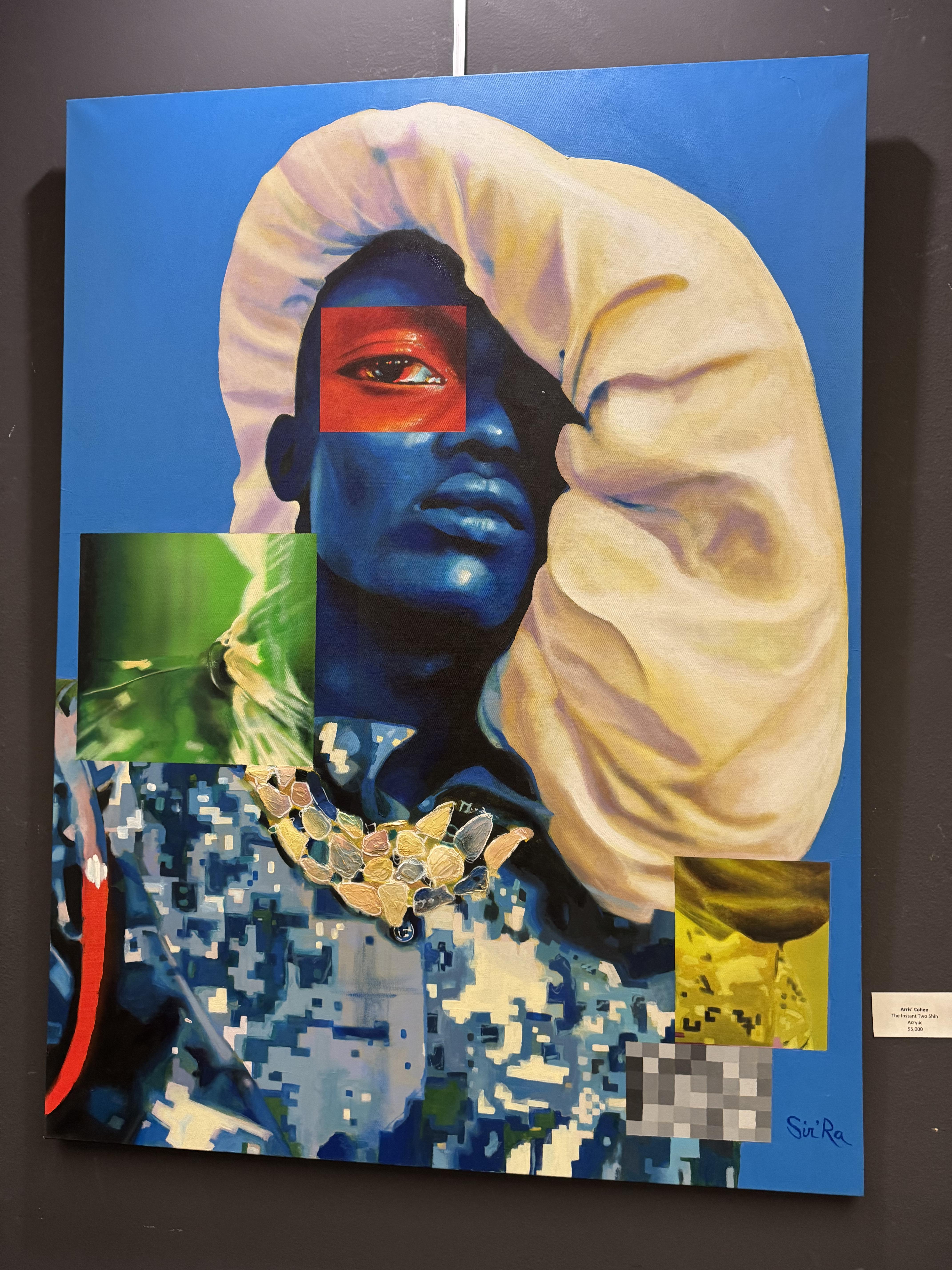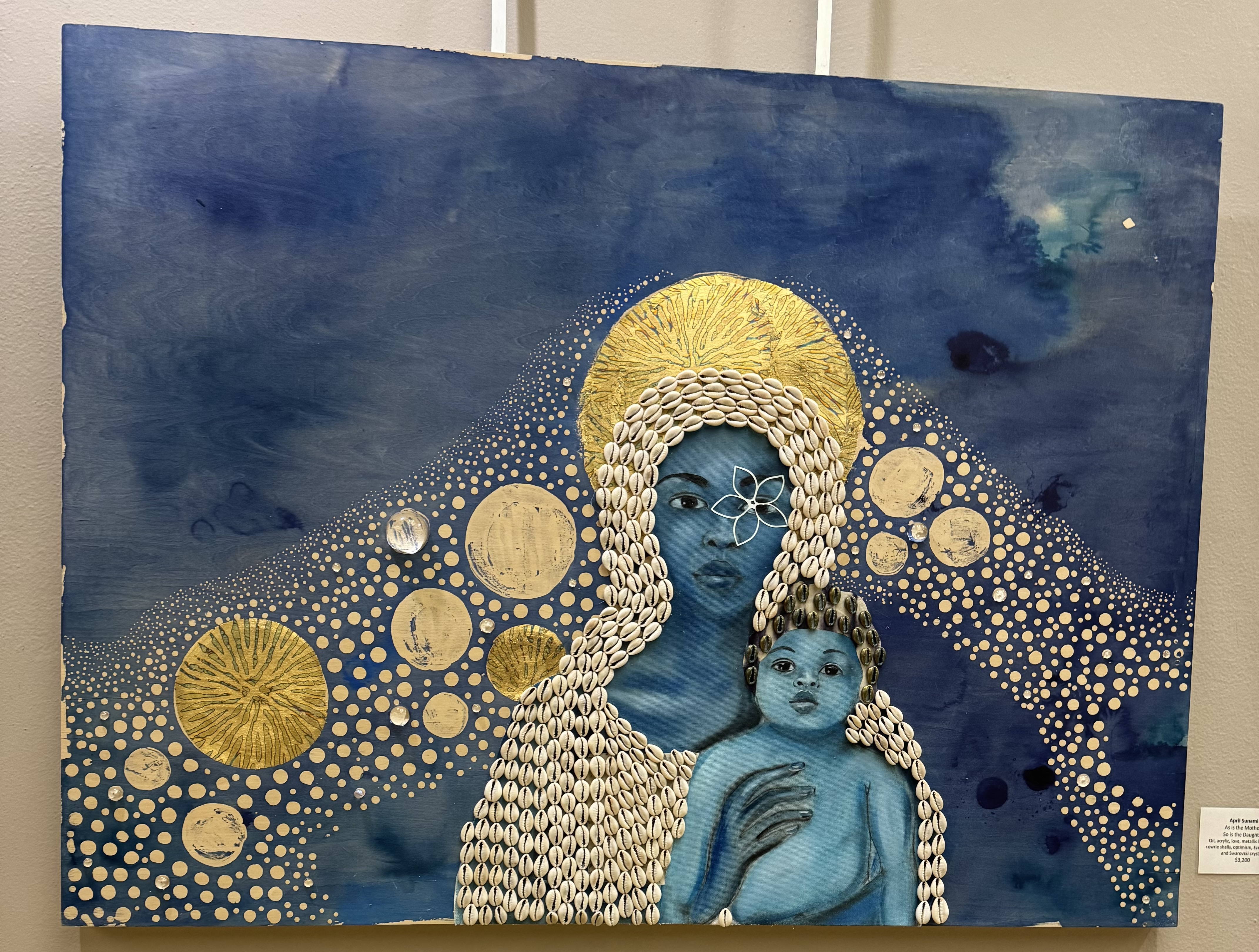The Seat, The Table, The Future: Past and Present Meld at Arris’ Cohen's exhibition, “A Seat at the Table”

Established in 1923, the Ohio State Faculty Club has been the home for many local artists’ exhibitions throughout the years. This month, it opened its doors to display a historic exhibition: A Seat at the Table, the first Faculty Club exhibition to display a group of exclusively Black artists’ work. Curated by Urban Arts Space’s very own Community Artist-in-Residence, Arris’ Cohen, this exhibition merges the Black arts ecosystem of Columbus—both new and old—into one, celebrating their stories, voices, and perspectives. Featuring work from Terron Banner, Queen Brooks, Arris’ Cohen, Richard Duarte Brown, Tiffany Lawson, Ike Newsum, Aminah Robinson, April Sunami, and Pheoris West, the long overdue appreciation of Columbus’s Black arts community is on display until March 6, viewable during the Ohio State Faculty Club hours (Monday–Friday, 9 AM–5 PM). Admission is free for all.
On Friday, January 17, the Faculty Club hosted an opening reception followed by a panel discussion, and as a new intern at Urban Arts Space, I was fortunate enough to be able to attend. Walking through the Faculty Club front doors, my eyes were immediately drawn to the colors jumping at me from Arris’ Cohen’s newest piece The Instant Two Shin. With its brilliant blues and popping primaries, the Afrofuturistic portrait invites you into the exhibition with its tangible energy, promising color and character.

As I roamed farther into the exhibition, my senses were delightfully overwhelmed as the warm chatter of artists and art appreciators filled my ears and more vibrant works popped from the walls, demanding my attention. I was drawn to April Sunami’s work featuring a synthesis of abstract and reality, a style I learned she coined herself as "psycheñwelic" art (from the Greek root psyche, meaning mind or soul as combined with the Swahili word nywele meaning hair). Her work, As is the Mother, So is the Daughter, was solidified as my favorite piece as I read the placard describing the mediums used as “oil, acrylic, metallic leaf, cowrie shells, optimism, Ezekiel 16:44, and Swarovski crystals.”

Following the exhibition, a dynamic panel discussion moderated by Dr. Terron Banner delved into themes of representation, equity, and empowerment. The panelists included Dr. Maurice Stevens, Josiah Jamison, Ajanaé Dawkins, Dr. Summer Luckey, Donte Woods-Spikes, and Arris’ Cohen. They shared their stories of creating, growing, and participating in the Black arts community of Columbus, Ohio, answering the question, what does it mean to have a seat at the table?
“The seat represents agency and presence, both physically as a literal place and symbolically. There is a claim in that to identity and belonging. The table itself is a site of exchange and collaboration. It symbolizes community and power dynamics; it focuses on who is included and who is excluded. The future is the horizon shaped by our choices today. It’s a reflection of the positions we take and the dialogues we engage ourselves in. Together, they explore how our actions shape collective possibilities.” — Arris’ Cohen, Curator and Urban Arts Space Community Artist-in-Residence
Arris’ Cohen explained the meaning behind the exhibition’s title, highlighting the importance of each distinct aspect in how he curated the show. He went on to explain it’s not just about having a seat at the table, it’s about creating a table where Black artists can feel like they belong.
“When I think about the table…my first question is who built it?” — Ajanaé Dawkins, Urban Arts Space Community Artist-in-Residence
Poet and theologian Ajanaé Dawkins questioned the rhetoric of fighting for a seat at the table, the rhetoric she grew up with. She posed the question, “What would it mean to build our own tables?” She explained that in creating spaces, such as the very panel she was sitting on, Black artists have created their own ecosystem of life in which they can thrive. No longer is it about fighting for a seat at the table, no longer is it about coming to the table and consuming. Columbus’s Black artists have created their own table where one can indulge in art, life, and knowledge in a space where they aren’t told how they are allowed to exist.
Dawkins shared that her own work is made with an ethic of love and community, something that large academic institutions such as Ohio State don’t value as much as they do traditional education. Exhibitions such as these are a way for institutions to participate in regenerative engagement, partnering with community members in ways that create more opportunities for everyone.
Throughout the exhibition and panel, there was a dissolving of boundaries, a merging of generations, and a celebration of community while making space for everyone, past, present, and future. While this exhibition was historic as the first to feature exclusively Black artists, it sets the stage for Ohio State and the Faculty Club to further collaborate with the expansive ecosystem of Columbus’s Black arts community and allow them to create even more spaces where Black creativity is celebrated.
A Seat at the Table is on view at The Ohio State Faculty Club (Monday-Friday, 9AM - 5PM) until March 6, 2025.

